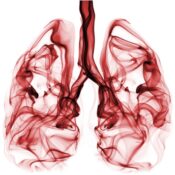In the past year, women’s health experts who have long been bickering over the benefits and risks of hormone therapy have begun to make peace. Part of that has come from the publication of several new analyses of the WHI and other studies suggesting that the risks and benefits of hormone therapy hinge on how near a woman is to the start of menopause when the drugs are started.
A 2007 analysis of WHI published in JAMA found no increased risk of heart attack in women who started hormone therapy closer to menopause, but it found high risks in women who started taking hormones long past menopause. The analysis also hinted that younger women in the study taking hormones—those aged 50 to 59—were less likely to die for any reason compared to others not taking the drugs. The study authors, which included Manson and Rossouw, said the analysis offered some reassurance that hormones remained “a reasonable option for the short-term treatment of menopausal symptoms.”
“Timing is important,” says Dr. Margery Gass, executive director of the North American Menopause Society. Unlike many other drugs, which are equally effective at any age, the research now suggests that starting hormone therapy well after menopause has more side effects than starting just at the time of menopause.
Gass says the ideal candidate for hormone therapy is the early post-menopausal woman who has bothersome symptoms. Beyond that, she says, it would be a woman who does not have a history of blood clots or breast cancer or a high risk for stroke or a heart attack. Women with only vaginal dryness or discomfort during sex should be treated with low doses of estrogen applied directly to the vagina via creams or rings, according to consensus.
More signs of harmony in the research community came in July of last year, when 12 medical organizations joined the North American Menopause Society, the American Society for Reproductive Medicine, and the Endocrine Society in a joint statement assuring women and their doctors that hormone therapy is acceptable and relatively safe for healthy, recently postmenopausal women suffering from menopause symptoms. And this January, the Society for Women’s Health Research concluded that for symptomatic women near menopause, the benefits of estrogen and progestin for at least five years outweigh the risks, and that for younger women who have had a hysterectomy, the benefits of estrogen treatment outweigh the risks for at least 10 years.
Dr. Cynthia Stuenkel, an endocrinologist specializing in menopause at the University of California, San Diego, has spent her 25-year career advising women about menopause. She says the decade since WHI was released has been a rich time, allowing researchers to arrive at a much better understanding of the risks and benefits of menopause therapy. “I do think the risks are real, but they are very small. They are in a category of rare or very rare,” she says.
That may bring some assurance to women like Jane Sharninghouse, a 56-year-old artist from Palo Alto, California, who started using an estrogen patch along with periodic cycles of progesterone three years ago to address low energy and symptoms of depression. Sharninghouse, the wife of a radiologist, started taking hormone therapy after her husband urged her to seek help for her symptoms. While she feels better physically, she faces disapproval from some friends. The widely published concerns about hormone therapy from a decade ago still linger in the mind of the public. As Sharninghouse tells it, “I hear a lot that it’s not natural.”
Which treatment is right for whom? As experts begin to reach consensus on the use of hormones in younger women to treat symptoms of menopause, many are now turning their focus to finding which of the many hormone therapy options are safest. A 2012 study called the Kronos Early Estrogen Prevention Study, or KEEPS, looked at the risks and benefits of different forms of hormone therapy in women aged 42 to 59. Study subjects took either a placebo or a low-dose estrogen pill or patch. Those on estrogen also took Prometrium, a drug designed to closely mimic natural progesterone. At the end of the four-year study, researchers found both the patch and pill forms of estrogen eased hot flashes and improved bone density, mood, and sexual health, without increasing cardiovascular risks.
Manson, one of the KEEPS study authors, says each form of estrogen had its advantages and disadvantages. For example, while both forms of hormone therapy helped improve some of the sexual symptoms of menopause, women who used the patch had the added benefit of improved sexual desire and arousal. “There isn’t a clear winner,” Manson says, but findings should help doctors make better choices for patients.
While each woman’s menopause is different, about 75 percent of all women who go through it will have hot flashes, and 15 to 20 percent will have symptoms that interfere with their sleep and lower their quality of life. For these women, who may have feared taking hormone treatments in the past, the growing consensus on the safety of hormone treatments may bring a bit of comfort. “I don’t tell everyone that they need it,” Stuenkel says. “But I feel more confident that today we are doing a better job of making sure it’s safe.”
Become a Saturday Evening Post member and enjoy unlimited access. Subscribe now



